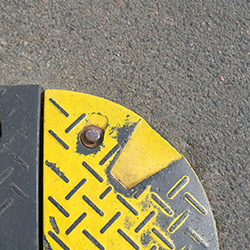Can something as simple as a bump on the road really make a difference in traffic safety? The answer is a resounding yes. Speed bumps are not just obstacles to slow down drivers; they play a critical role in reducing accidents and enhancing overall road safety. This article will delve into how speed bumps contribute to traffic safety and why they are essential in certain areas.
The Role of Speed Bumps in Traffic Safety
Speed bumps are integral to various traffic safety strategies, providing a physical means to control vehicle speed and protect both drivers and pedestrians.- Pedestrian Safety Enhancement: One of the primary benefits of speed bumps is the increased safety for pedestrians. In areas with high foot traffic, such as school zones and residential neighborhoods, speed bumps force vehicles to slow down, significantly reducing the risk of accidents.
- Crash Prevention: By compelling vehicles to reduce speed, speed bumps help in preventing accidents. Lower speeds give drivers more time to react to unexpected situations, reducing the likelihood of collisions.
- Traffic Flow Regulation: Speed bumps can be strategically placed to regulate the flow of traffic, ensuring vehicles move at a safe speed throughout certain stretches of road.
How Speed Bumps Work
The mechanism behind the effectiveness of speed bumps lies in their ability to create a physical obstacle that requires drivers to slow down.- Vertical Deflection: Speed bumps create a vertical deflection in the vehicle’s wheels, causing discomfort if crossed at high speeds. This forces drivers to slow down to a comfortable speed, typically around 5-10 mph.
- Increased Driver Awareness: The presence of speed bumps, often marked with signage, alerts drivers to slow down. This increased awareness helps in preventing speed-related incidents, especially in pedestrian-heavy areas.
Installation Considerations
For speed bumps to be effective and accepted by the community, certain considerations must be taken into account.- Strategic Placement: The effectiveness of speed bumps depends largely on their placement. They should be installed in areas where reduced speed is necessary for safety, such as near schools, hospitals, and parks.
- Community Involvement: It is important to involve the community in the decision-making process. This helps in ensuring that the installation of speed bumps addresses genuine safety concerns and that they are well-received by the residents.

